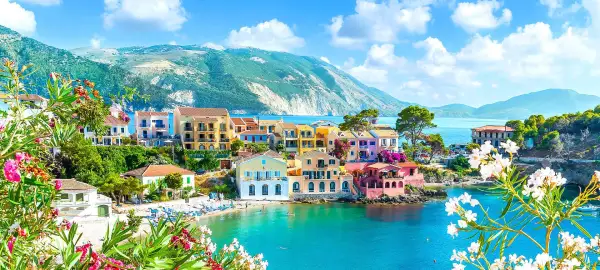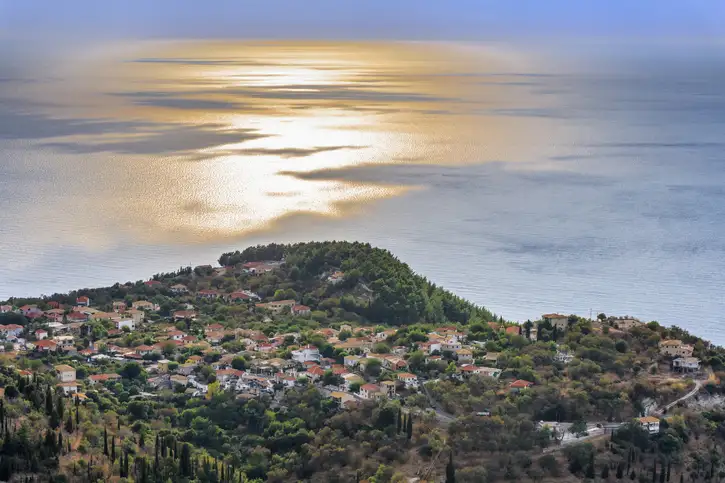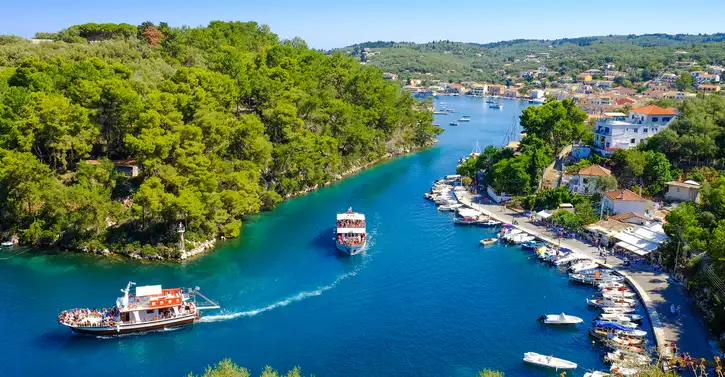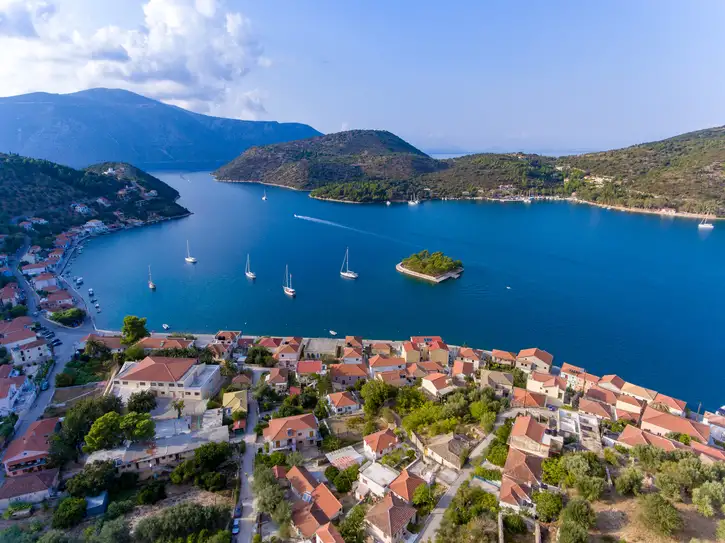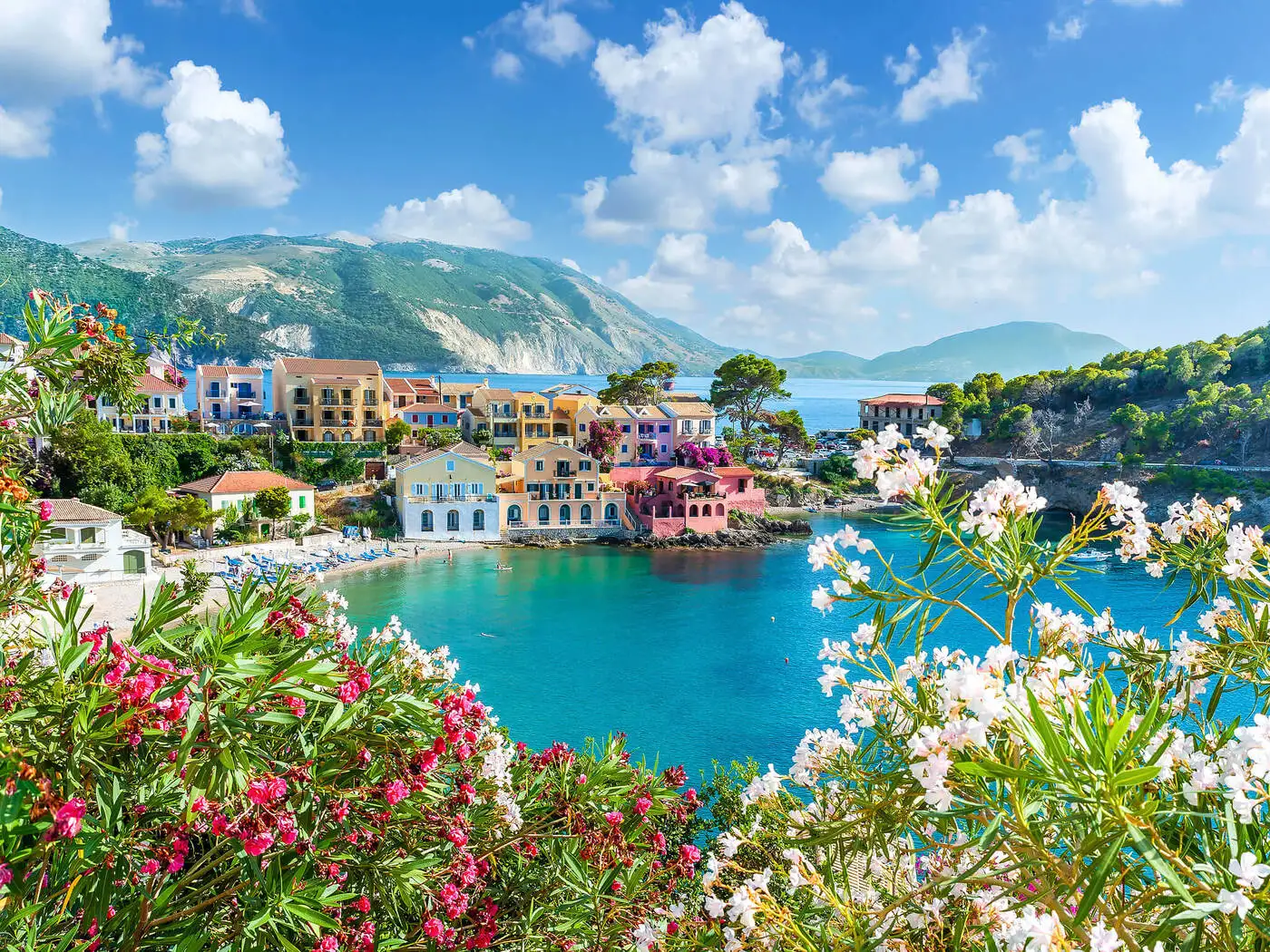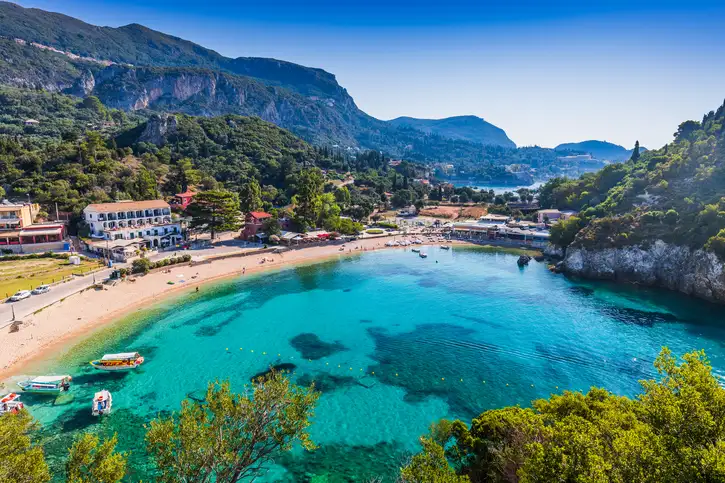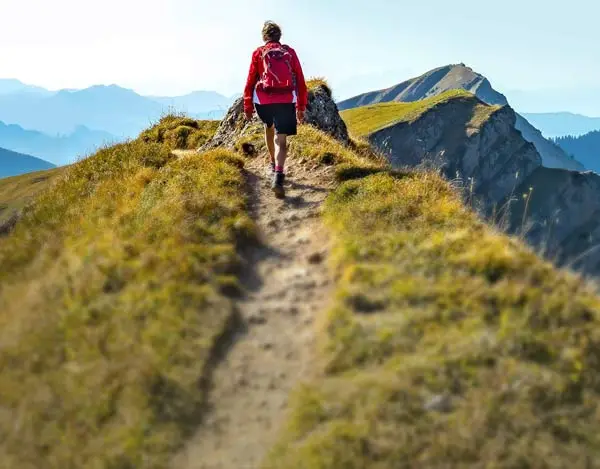Today we travel by local ferry to the island of Paxi (aka Paxoi or Paxos).
In doing so we experience a major shift of gears, exchanging the largest, most-developed and visited of the Ionian islands, with a destination that couldn’t be any more of a contrast: the island of Paxi, the smallest and one of the least-developed (excluding those islets within the group that are uninhabited). According to Greek myth, Paxi was created when Poseidon slammed down his trident on Corfu, chipping off this eight-mile-long chunk of chalky, olive-grove-covered rock. Though Paxi is located only 15 km south of Corfu, it might as well be 1,000 -- it’s quaint and cozy, with picturesque fishing villages and extensive ancient olive groves divided by stone walls. This is about as laid-back as it gets.
We will aim, of course, for a direct link; however, please note that we may sail first to the nearby mainland port of Igoumenitsa and connect onward from there. Accordingly, some may wonder why we include this tiny island on our program, and it essentially comes down to two things: 1) culturally and visually, it’s for a taste of Greek island life from days-gone-by, and 2) if you look at a map, it makes logistical sense. The distance between Corfu and the larger islands to the south is considerable, and Paxi conveniently allows us to break up an otherwise 7-8 hour ferry crossing to Lefkada.
In the spirit of the local custom, our time and activities here are somewhat free-form, with an intent to showcase this pretty place in a way that sets the stage for other islands yet to come. One of the greatest joys and rewards from island hopping in this part of the world is that each place is unique in its own special way, which forms the basis of one of the more compelling themes that tie this itinerary together.
Today upon arrival, we should be able to visit the main town of Gaios and possibly (perhaps tomorrow) accomplish a leisurely (and optional) one-hour point-to-point walk of about 3km (with vehicle support). From the small coastal settlement of Loggos the route ascends (+/- 120m) to the small village of Mastoratika -- the view to the and the green surroundings is amazing. From here the route descends to the sea, reaching Monodendri Beach with stunningly clear blue waters.
More info at https://www.alltrails.com/greece/paxos - “Loggos - Monodendri Beach”
This evening we enjoy a group dinner on an island with an abundance of fresh and tasty Mediterranean vegetables, herbs, fruits, seafood, and meats all kissed by the Ionian sun and blessed by the local micro-climate. The food alone is a reason to visit this place.
Overnight on Paxi.
Included Meal(s): Breakfast and Dinner